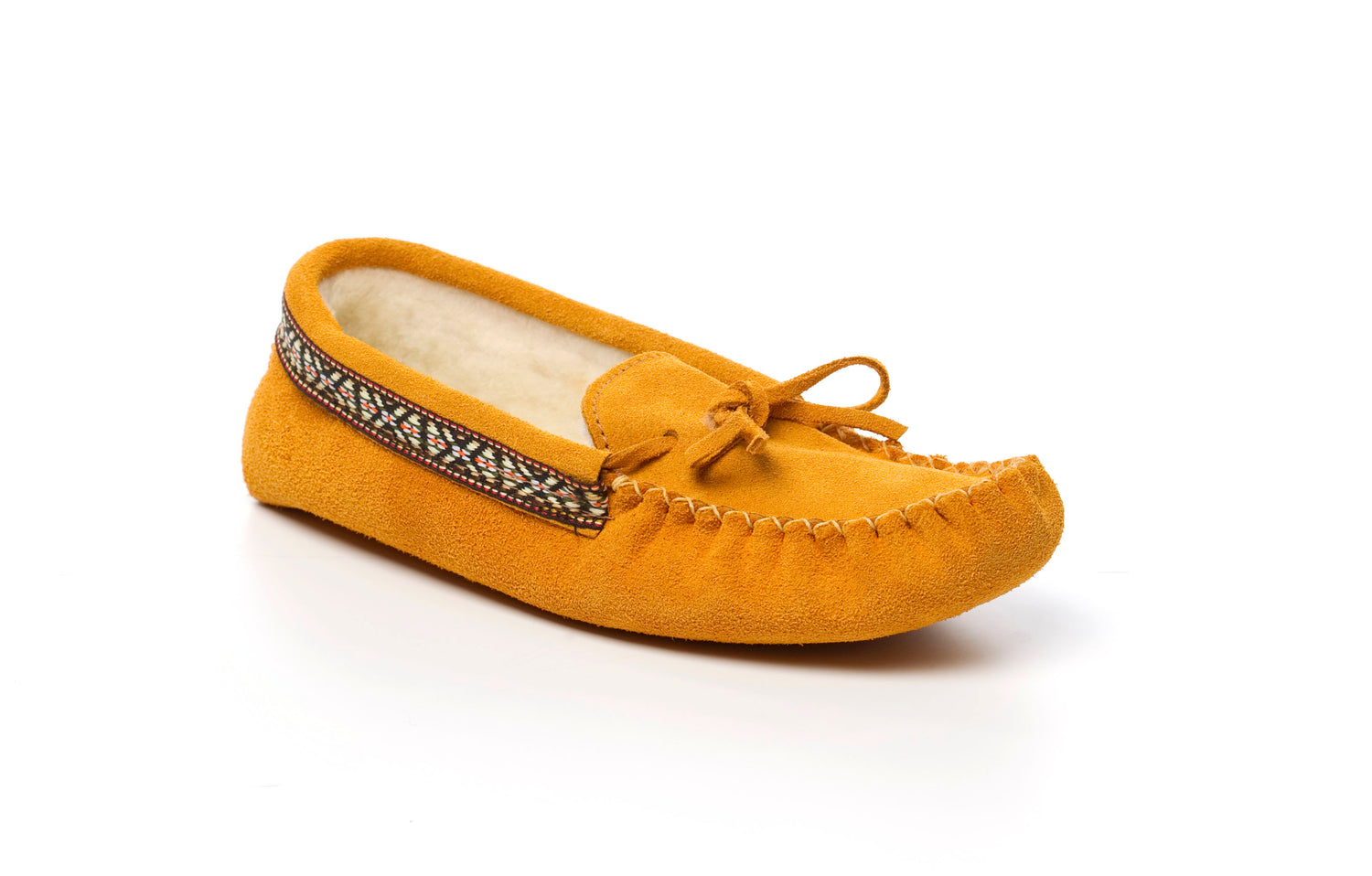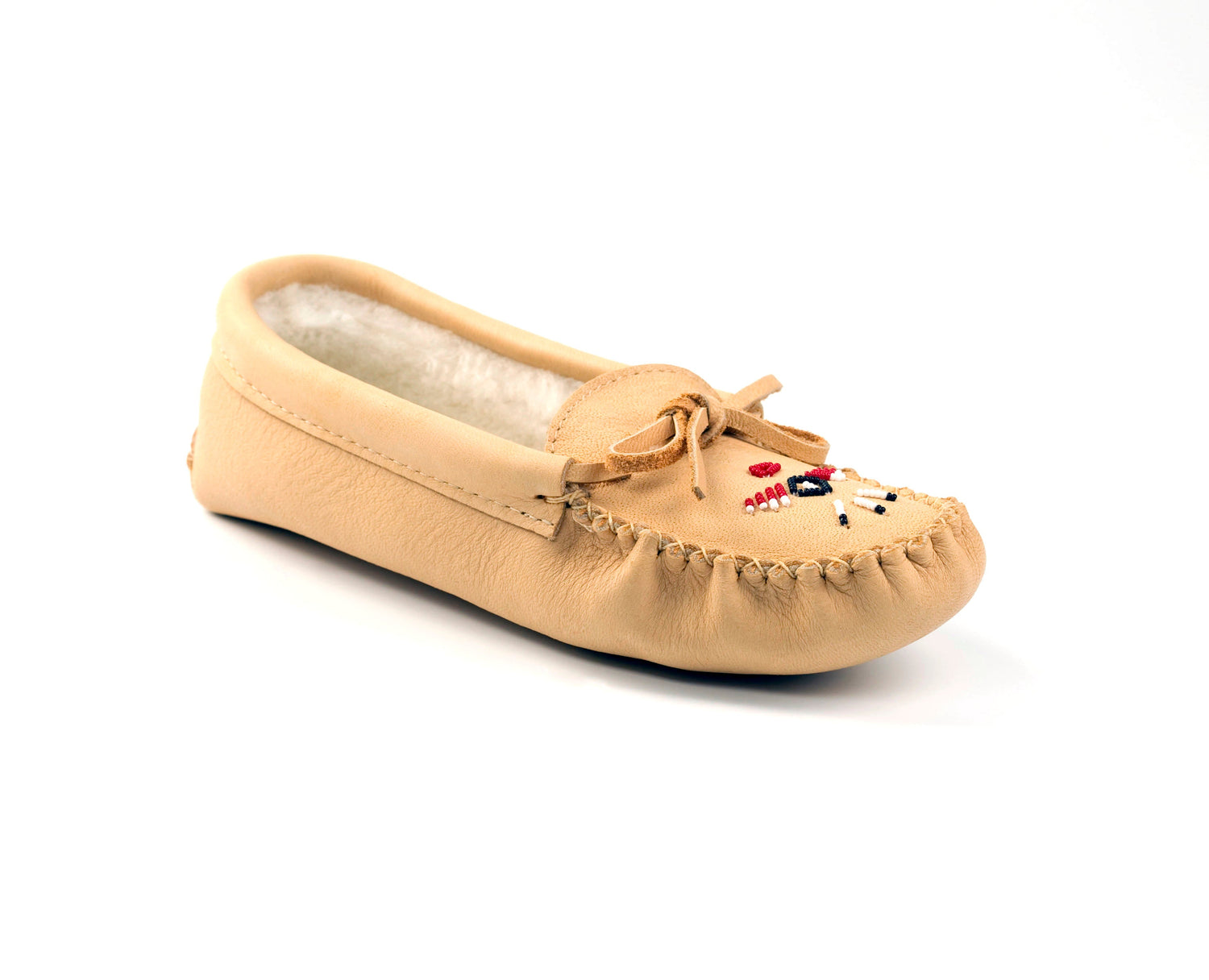
The Modern Moccasin: A Journey from Ancient Roots to Mainstream Necessity
Share
The Modern Moccasin: A Journey from Ancient Roots to Mainstream Necessity
Echoes of the Past - The Enduring Legacy
The story of the modern moccasin is a fascinating tapestry woven from ancient traditions and contemporary needs. To truly understand its place as a mainstream necessity today, we must first appreciate its deep roots. Originating thousands of years ago with Indigenous peoples across North America, the moccasin was more than just footwear; it was a testament to survival, connection to the land, and masterful craftsmanship. Crafted from a single piece of supple animal hide, these early designs provided essential protection, stealth, and an intimate feel for the earth beneath. The variations were vast—soft-soled for forest dwellers, hard-soled for rocky terrains, each adorned with intricate beadwork or quillwork that told stories of tribal identity, personal journeys, and spiritual reverence.
When European settlers first encountered these ingenious shoes, their own rigid, impractical footwear quickly paled in comparison. The moccasin offered unparalleled flexibility, warmth, and quiet movement, making it indispensable for navigating the challenging new landscape and enduring harsh winters. This early cultural exchange marked the beginning of the moccasin's journey beyond its original communities, as it was adopted, adapted, and eventually admired by a wider audience. This initial appreciation, born of pure practicality, laid the groundwork for its future evolution.
What set the moccasin apart from every other shoe was its fundamental design philosophy: comfort through flexibility and a sensation of being grounded. It defied the conventions of Western footwear, which often prioritized structure and formality. This inherent distinction meant that even in its earliest forms of broader adoption, the moccasin carved out a unique space—a shoe that prioritized the natural movement and comfort of the foot. It was not a boot, nor a formal shoe; it was simply a better way to cover and protect the feet, and this foundational appeal has never truly faded.
The Transformative Era - From Utility to Lifestyle
The 20th century proved to be a pivotal era in the moccasin's transformation from a utilitarian item to a lifestyle staple. As societies modernized, the emphasis shifted from purely survival-driven footwear to comfort and casualization. The post-war boom, combined with a growing appreciation for leisure and relaxed living, created fertile ground for the moccasin to flourish. It was during this period that the moccasin began to shed some of its direct ties to its Indigenous origins in the mainstream consciousness, evolving into distinct commercial styles that would soon become ubiquitous.
The driving moccasin emerged as a popular iteration, its nubs on the sole providing grip for pedals and comfort for long drives—a clear response to the burgeoning car culture. The boat shoe, with its distinctive moc-toe stitching and non-slip sole, became synonymous with nautical leisure and preppy style. Even the penny loafer, with its slip-on convenience and comfortable fit, owes a significant design debt to the moccasin's fundamental construction. These diverse adaptations showcased the incredible versatility of the moccasin's core design elements.
However, it was perhaps in its most relaxed form—the indoor slipper—that the moccasin truly cemented its place in everyday life. The soft, unrestrictive nature, often lined with wool or fleece, became the quintessential symbol of home comfort. This casualization wasn't a diminishment of its status; rather, it was an expansion. The moccasin was no longer just for specific outdoor tasks; it became the go-to for unwinding, for weekend ease, and for moments of personal solace. This era saw the moccasin transition from a specialized item to a beloved, everyday accessory, a silent yet essential part of many people's routines.
The Modern Renaissance - A Fusion of Function and Fashion
Today, the moccasin has undergone a remarkable renaissance, solidifying its status as a mainstream necessity. This isn't merely a nostalgic throwback; it's a sophisticated evolution driven by a renewed appreciation for comfort, sustainability, and mindful living. Modern consumers, spending more time at home and prioritizing well-being, are actively seeking footwear that supports both foot health and a relaxed lifestyle. The moccasin, with its inherently comfortable and flexible design, perfectly answers this call.
Contemporary moccasins come in a staggering array of materials and styles, ranging from traditional leather and suede to innovative eco-friendly options. Advanced cushioning technologies are often integrated into the double-padded soles, enhancing the foundational comfort that has always been its hallmark. Shearling and plush fleece linings provide luxurious warmth, making them indispensable during colder months, while breathable, unlined versions are perfect for year-round wear. The range of colours, textures, and subtle embellishments means there's a moccasin for every personal style, seamlessly blending into casual, smart-casual, and even some work-from-home aesthetics.
Moreover, the increasing awareness around ethical sourcing and supporting local craftsmanship has brought the moccasin full circle. Many brands are now highlighting the Indigenous heritage of the design, working with Indigenous artisans, and emphasizing transparent production practices. This not only adds depth and meaning to the product but also resonates with consumers who seek authenticity and purpose in their purchases. The modern moccasin isn't just about what's on your feet; it's about connecting with a story, supporting a community, and making a conscious choice for comfort and quality.
Beyond the Footwear - A Symbol of Conscious Living
The journey of the moccasin from ancient practical necessity to modern-day staple is a powerful narrative of adaptation, enduring design, and cultural impact. It has evolved far beyond its original form, yet its core essence—unparalleled comfort, flexibility, and a connection to natural movement—remains unchanged. Today, the moccasin is more than just a shoe; it's a symbol of a conscious lifestyle.
In a fast-paced world, the moccasin offers a tangible invitation to slow down, to prioritize personal well-being, and to find comfort in simplicity. It's the footwear we reach for when we want to feel grounded, whether we're navigating a busy day at home, running errands, or simply relaxing with a book. Its versatility means it seamlessly fits into diverse wardrobes and lifestyles, proving that true comfort never goes out of style.
Furthermore, the modern moccasin, particularly those that honour their Indigenous origins, represents a broader movement towards cultural appreciation and respectful engagement. By choosing well-made, ethically sourced moccasins, consumers are not just buying a product; they are participating in a story that spans centuries, recognizing the ingenuity of the past, and supporting a more mindful future.
Ultimately, the moccasin has earned its place as a mainstream necessity not just because it’s comfortable or stylish, but because it offers something deeper: a connection to heritage, a commitment to quality, and an embrace of a lifestyle that values comfort, authenticity, and well-being from the ground up. It is a testament to the fact that some of the most enduring and essential designs are those that serve the most fundamental human need for comfort and protection, all while telling a rich and timeless story.



